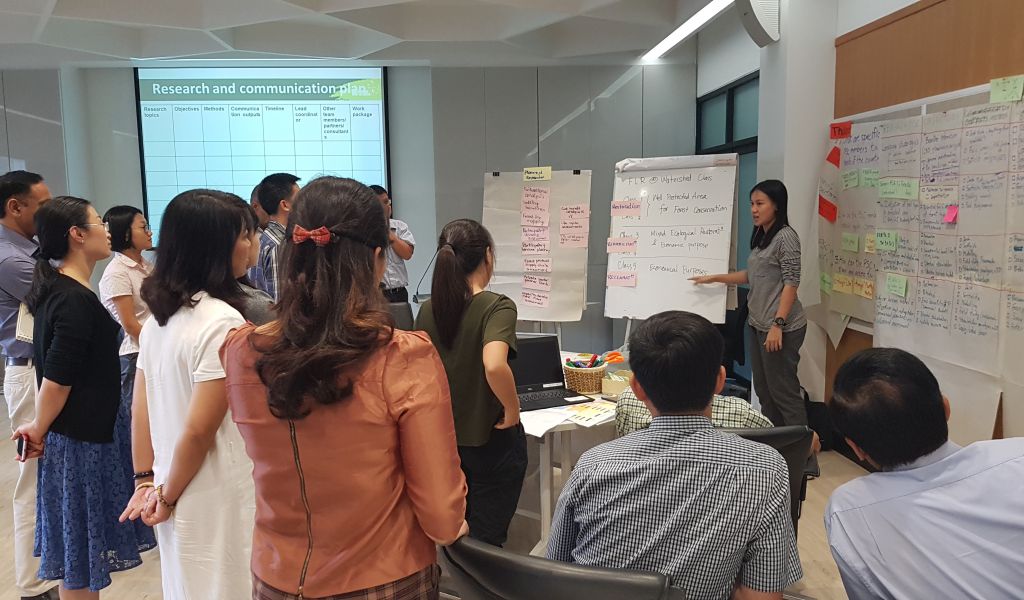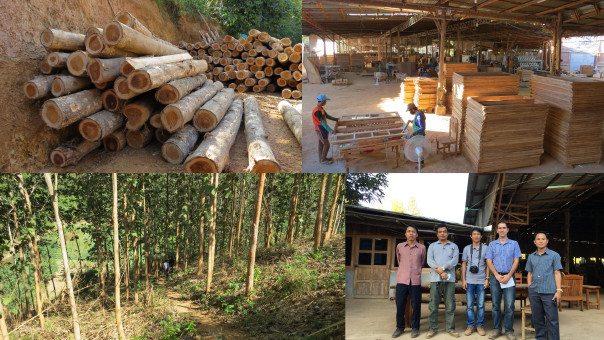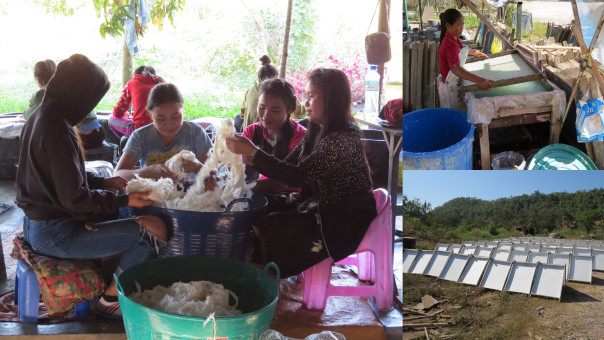News from Forest Landscape Restoration in the Greater Mekong Sub-region

The FLOURISH project (2018-2022), funded by the International Climate Initiative (IKI) of the German Government, held its first Steering-Committee Meeting and planning workshop in Bangkok from 11.-13. December 2018. A lot of activities took place since the inception workshop in July 2018 and it thus was just at the right time that project partners and local stakeholders from state organisations, the science community, civil society and the private sector came together to update each other on the current status of the project. Participants came from the three project countries Laos, Thailand and Vietnam, and international partners such as RECOFTC, TU Dresden (Institute of International Forestry and Forest Products) and INBAR.
The 3-days meeting and workshop provided opportunities for collaborative planning of project activities in the three selected landscapes Sayabouri (Laos), Nan (Thailand) and Nghe An (Vietnam) in the years to come. Particular attention was paid to the critical role participatory action research (PAR) will play as vehicle to engage stakeholders in the process of developing community-private sector partnerships serving as backbone for crafting production-driven landscape restoration pathways. After three days of intensive work the project has now a well-developed work plan for the years ahead.
Before participating in the Steering Committee Meeting, I (TU Dresden research coordinator for FLOURISH) visited the project sites in Laos and Thailand.
In Laos I investigated teak plantations and saw mills. Teak is well known as a fine timber and native species in northern Laos. Smallholder teak plantations have emerged as a prominent feature in the landscape since the mid 1990s land reforms, contributing to people’s livelihoods and reforestation. Nevertheless, over recent years teak stands have been constantly declining as harvesting of mature stands is now outstripping replanting by far. Although market demand for teak is still high, because of the long rotation cycles (15-30 years) and low market prices farmers are reluctant to invest in the maintenance of their woodlots. More research on the present silviculure practice, local livelihoods and the teak commodity chain is needed to craft sustainable business models in which teak can be promoted for forest landscape restoration.

Beyond teak, paper mulberry (bark) is considered to be a potential entry point for the project. Omnipresent in northern Laos, the bark is a major NTFP vital to local livelihoods, in particular poorer households of ethnic minorities in upland, forested areas. Bark collection takes place in natural forests during the off-farm season when there is no labour competition with other livelihood activities. After semi-processing the greater part of dried barks and pulp leaves the country to Thailand and China for paper production, while only a fraction stays within the domestic market for further processing. Though relatively small in size, the local processing industry is diverse, ranging from household-based entities to medium-sized enterprises. Grasping present harvesting practice and exploring ways of how more value could be added to the commodity chain within Laos turned out to be two of many potential research topics for MSc thesis to be done within FLOURISH.

In Thailand, I visited Nan Province, which is well known as one of the country’s deforestation hotspots, and therefore has been selected by the FLOURISH project as pilot site. Forest encroachment through smallholder expansion for corn production has been the main driver of forest loss in this area over the past 20 years. Water quality depletion, flooding, landslides and other adverse effects are prompting local communities and authorities to do something to get more trees back into the landscape for watershed protection. The FLOURISH project aims at crafting forest landscape restoration pathways that benefit local livelihoods and ecologies at equal measure. Using trees as collaterals, increasing land tenure security and building local business models that link carbon sequestration with NTFP are potential research topics.

